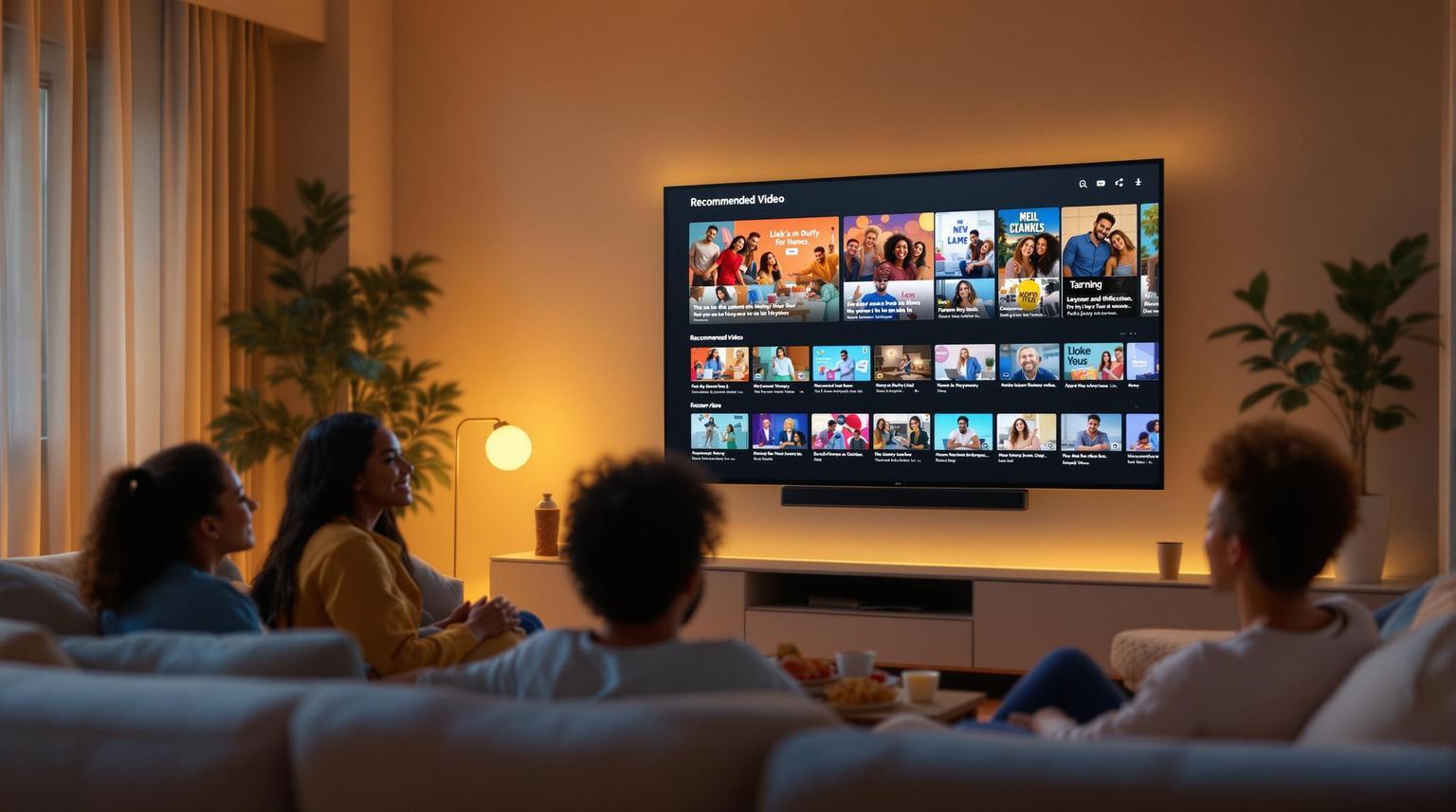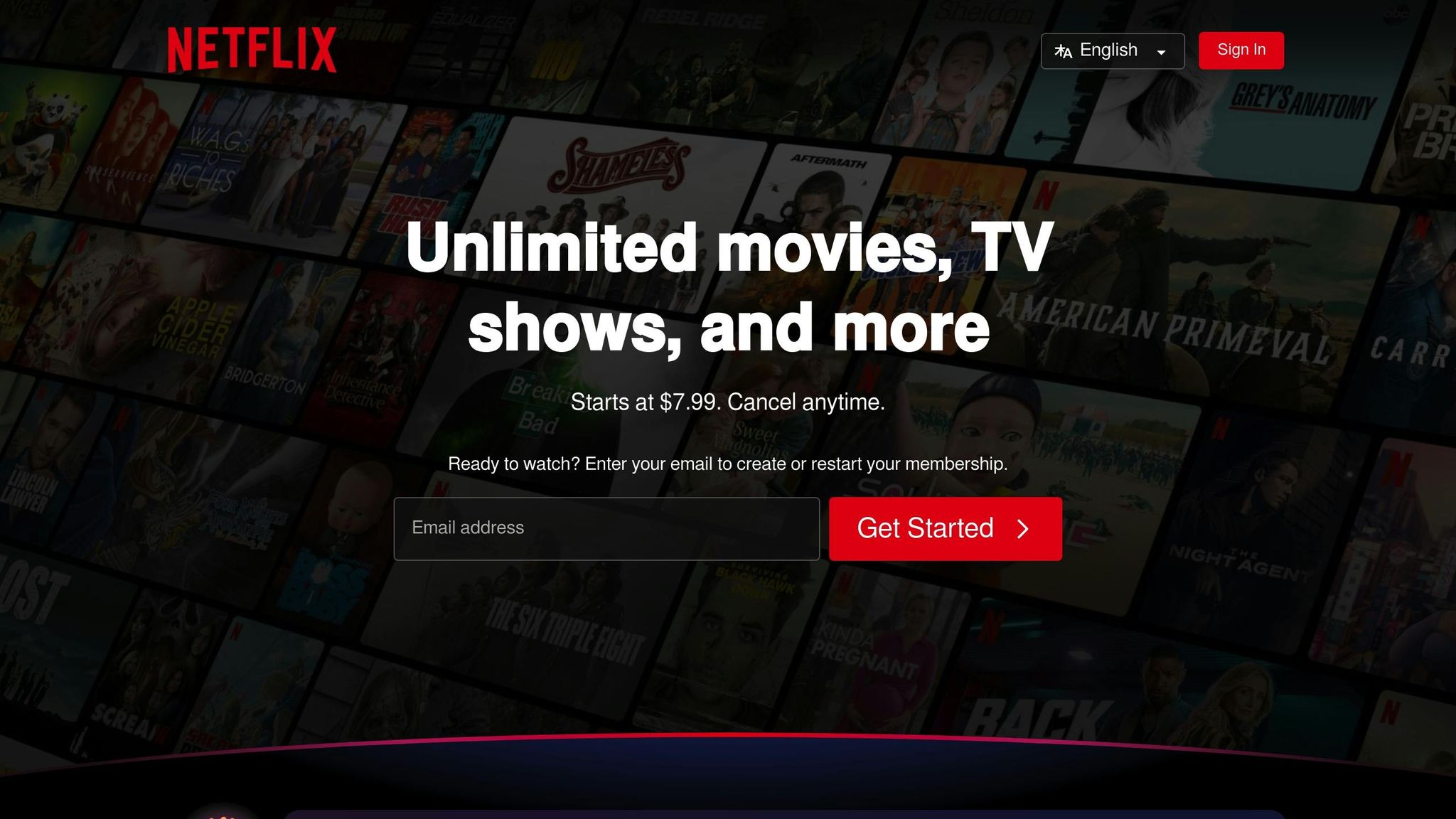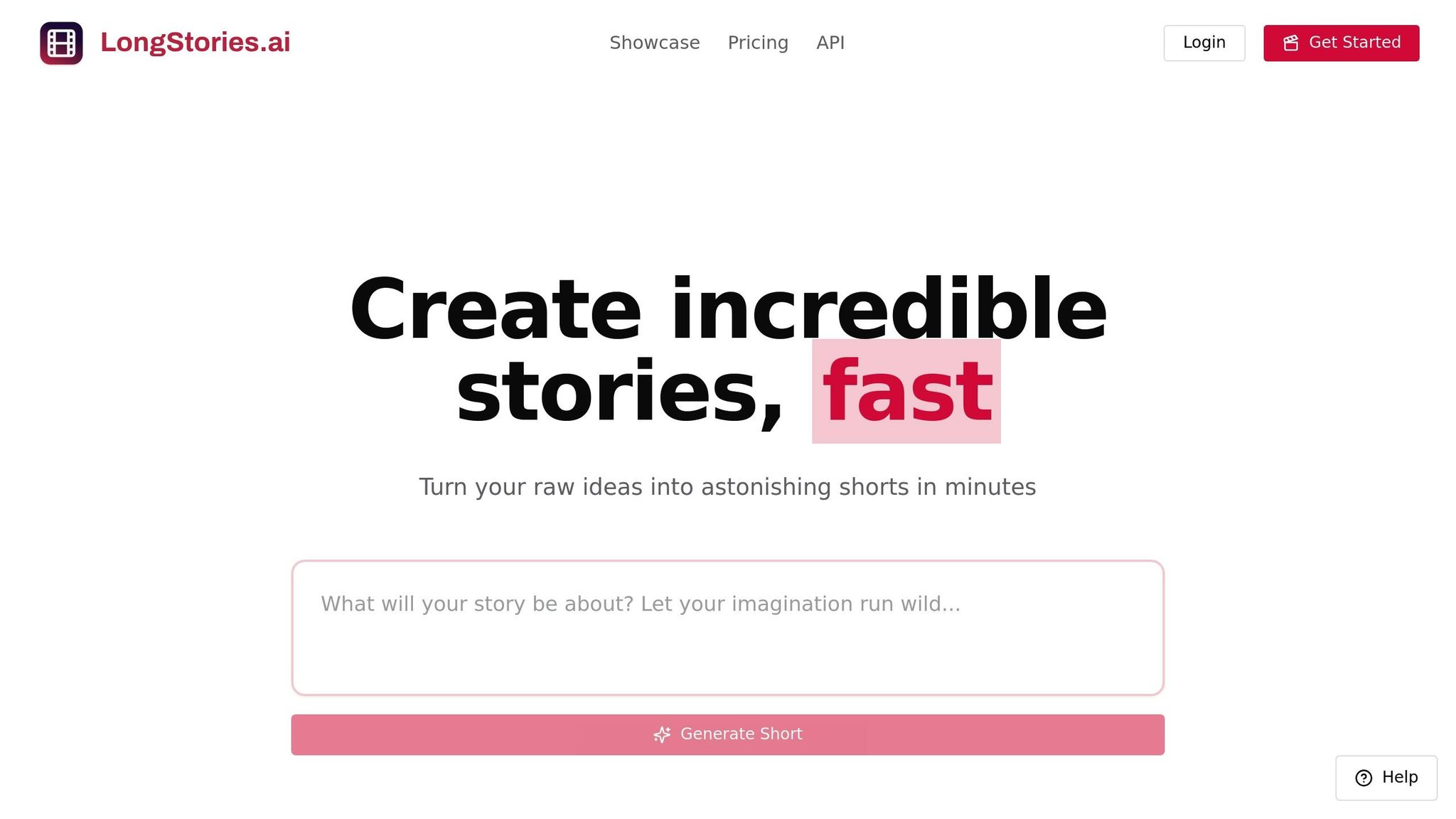
LongStories is constantly evolving as it finds its product-market fit. Features, pricing, and offerings are continuously being refined and updated. The information in this blog post reflects our understanding at the time of writing. Please always check LongStories.ai for the latest information about our products, features, and pricing, or contact us directly for the most current details.
How Recommendation Systems Personalize Video Content
Recommendation systems are the technology powering personalized video suggestions on platforms like Netflix and YouTube. By analyzing user behavior, content details, and contextual data, these systems create tailored viewing experiences that boost user engagement, improve retention, and drive platform revenue. Here’s a quick breakdown:
- Why It Matters: Personalized recommendations increase watch time, help users discover content, and reduce subscription cancellations.
- How It Works: Combines user actions (likes, watch time) with AI techniques like deep learning, natural language processing, and visual recognition.
- Key Techniques:
- Collaborative Filtering: Uses similar user behavior to suggest content.
- Content-Based Filtering: Matches video attributes to user preferences.
- Hybrid Models: Combines multiple methods for better accuracy.
- Real-Time Features: Tracks active sessions, uses contextual data, and leverages edge computing for faster, more relevant recommendations.
Personalized recommendations are evolving with AI advancements, improving how platforms understand user preferences and deliver content.
How Netflix uses Machine Learning to Recommend Content

Core Recommendation System Mechanics
Modern recommendation systems use advanced algorithms to process massive data sets, delivering highly personalized content suggestions. These systems have come a long way from basic filtering methods, now leveraging AI and machine learning to refine their accuracy.
Filtering Methods Compared
Video platforms typically rely on three main filtering techniques to create recommendations:
| Filtering Method | How It Works | Strength | Example Use Case |
|---|---|---|---|
| Collaborative | Analyzes user behavior to find similar viewers | Helps uncover unexpected content connections | Netflix's "Because you watched" feature |
| Content-based | Matches video attributes to user preferences | Works well for new content with limited user data | YouTube's topic-based recommendations |
| Hybrid | Combines multiple approaches using machine learning | Boosts accuracy by 5-10% over single methods | Most major streaming platforms |
Key Data Sources
These systems rely on a variety of data streams to build detailed user profiles:
- Explicit Signals: User actions like ratings, likes, and subscriptions
- Implicit Signals: Metrics such as watch time and viewing habits
- Contextual Data: Information like device type and location
- Content Metadata: Details such as titles, descriptions, and tags
AI and Combined Approaches
AI technologies like deep learning and natural language processing (NLP) play a crucial role. Deep learning examines viewing patterns, while NLP processes metadata like video descriptions. Computer vision even identifies objects or scenes within videos, enabling more precise recommendations.
These systems continuously improve by:
- Processing interactions in real time
- Balancing personalized suggestions and content variety
- Modeling user preferences across multiple devices
This dynamic approach sets the stage for real-time adaptation techniques, which will be discussed next.
Real-Time Recommendation Methods
Modern video platforms use advanced real-time recommendation techniques to provide personalized content suggestions instantly. These methods rely on continuous analysis of user interactions and build on the hybrid AI approaches mentioned earlier.
Active Session Analysis
This method focuses on tracking user behavior during their current viewing session to adjust recommendations on the fly. It monitors factors like:
- How often users complete videos, scroll patterns, and interaction behaviors (e.g., pausing or skipping content)
- Time spent watching previews
Contextual Learning Systems
Contextual systems go beyond session tracking by combining user preferences with content discovery. Using decision-making algorithms, these systems can improve click-through rates by 10-30% compared to older methods. They rely on:
- Real-time preference tracking to adapt to user behavior
- Content analysis of video metadata for better suggestions
- Exploration rate to carefully introduce new content
Faster Recommendations with Edge Computing
Edge computing boosts how quickly recommendations are processed by handling data closer to users. This approach offers:
- 80% faster processing thanks to localized data handling
- Improved privacy through distributed data scaling
sbb-itb-94859ad
AI-Powered Content Analysis
AI-driven tools are transforming how video content is understood, breaking it down into three main areas for a deeper grasp of its components.
Text Analysis for Videos
Platforms dive into text elements such as:
- Video titles and descriptions to pinpoint main topics.
- Transcripts (both auto-generated and manual) for detailed insights into the content.
- User comments to track engagement and sentiment patterns.
This multi-layered approach goes beyond simple keyword matching, uncovering themes and relationships through sentiment analysis and trend detection.
Visual Content Recognition
Visual recognition tools analyze elements like:
- Themes and color schemes to identify aesthetic patterns.
- Objects and actions captured in the video.
- Facial expressions to gauge emotional tones.
These insights help systems recommend videos that align with a user's visual and stylistic preferences based on their viewing habits.
Sound Pattern Analysis
Audio analysis complements text and visuals, completing the broader understanding of content:
| Audio Element | Purpose | Impact on Personalization |
|---|---|---|
| Speech Patterns | Detects emotions and identifies speakers | Matches content based on tone and delivery style |
| Background Music | Classifies genre and mood | Suggests videos with a similar emotional vibe |
| Sound Effects | Identifies scene types | Groups videos by production style and quality |
Video Personalization Tools
These tools leverage real-time analysis and AI to create tailored video recommendations for users.
LongStories.ai: Video Generation Platform

LongStories.ai uses its API to offer AI-driven video creation for various formats like educational content, marketing videos, tutorials, and documentaries. It simplifies the process of making short-form videos with these features:
| Feature | Description |
|---|---|
| API Integration | Supports real-time personalized video creation |
| Custom Templates | Ensures content aligns with brand identity |
This platform connects directly with recommendation systems, enabling videos to be created instantly based on user interactions.
Enterprise API Solutions
Enterprise-level tools scale up hybrid AI methods for video personalization. Key functionalities include:
-
Content Analysis Integration
APIs like Amazon Personalize use video metadata to create recommendations, applying advanced techniques from the Core Mechanics section. -
Privacy-Focused Features
These solutions prioritize security with encryption, consent management, and adherence to GDPR/CCPA standards.
Conclusion
Main Benefits
AI-powered recommendation systems bring three key advantages:
| Metric | Impact |
|---|---|
| Click-through Rate | Up to 50% boost with personalized suggestions |
| User Engagement | 33% rise in video podcast interaction (Spotify case study) |
These systems excel in helping users discover content while leveraging data-driven personalization techniques discussed earlier. Platforms that adopt AI recommendation engines often see higher user satisfaction and better content engagement.
What's Next for AI in Video?
Building on the hybrid AI and real-time analysis strategies mentioned earlier, future systems are set to evolve with exciting advancements. Enhanced contextual analysis will allow these systems to interpret viewer emotions and situations, leading to more relevant, real-time recommendations.
Key trends on the horizon include:
- Privacy-first federated learning for secure and personalized suggestions
- Cross-platform integration: Unified systems that work across multiple devices and services
- Ethical AI practices: Transparent and explainable recommendations to build user trust
The industry is heading toward advanced methods that combine visual recognition, sound pattern analysis, and natural language processing. This multi-layered approach promises even more tailored and engaging content suggestions, creating deeply personalized viewing experiences.
FAQs
How does video recommendation work?
Video recommendation systems use machine learning to analyze both user behavior and content details, aiming to suggest content that fits user preferences. Platforms like Netflix and YouTube handle massive amounts of data - Netflix, for instance, processes 30 billion events daily, while YouTube adjusts recommendations in real time based on session data like watch time and click-through rates. These systems rely on hybrid filtering methods and real-time analysis to fine-tune suggestions.
Modern algorithms also incorporate AI to analyze content features, such as visuals, themes, and user interactions, making recommendations more accurate over time. For content creators, understanding platform-specific engagement metrics can boost their visibility within these systems. Tools like LongStories.ai apply these principles, offering API-driven video creation solutions designed to align with recommendation algorithms, as discussed in the Video Personalization Tools section.
